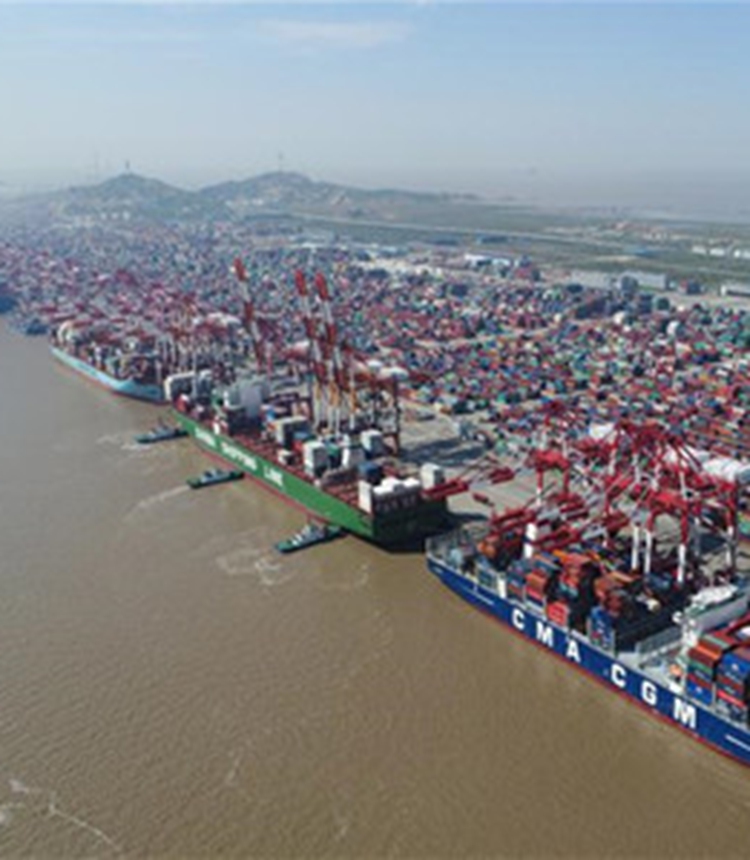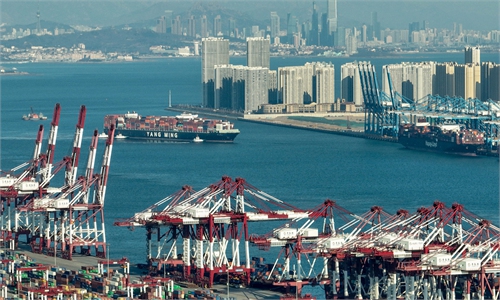
Aerial photo taken on April 23, 2017 shows a container wharf of Yangshan Port in Shanghai, east China. Yangshan Port is China's first port built on islands. Shanghai, one of the most important cities in east China, has contrainer trade with more than 500 ports of 214 countries and regions. In 2016, Shanghai port has kept standing at No. 1 in container throughput in the world for seven years in a row. (Xinhua/Ding Ting)
China's Ministry of Commerce (MOFCOM) together with 14 government departments issued a notice on Tuesday about launching pilot projects to advance the integration of domestic and foreign trade by removing institutional barriers. The country is rolling out a replicable model to promote a more self-reliant dual-circulation economic strategy for sustainable growth in the coming years.
The notice set a clear target of using three years to cultivate a number of companies in domestic and foreign trade integrated businesses, building corresponding supportive platforms, and forming a group of industrial clusters with international competitiveness and integrated development. Various innovative and supportive measures will be put in place, according to the notice.
One highlight of the pilot projects is to comprehensively sort out the institutional obstacles encountered by market players in carrying out domestic and foreign trade operations. A list of problems and needs for improving the integrated control system of domestic and foreign trade will be drawn up.
The notice pledged to clean up and correct unfair practices and hidden barriers such as local protection and market segmentation while conducting fair competition reviews and trade policy compliance assessments for enterprises.
The pilot projects will also promote mutual recognition of Chinese and foreign standards. By doing so, the government will further support qualified enterprises and industry organizations to comply with domestic and international standards and settle their businesses in China.
In utilizing the environment for domestic and foreign trade, the notice addressed several key risk-reduction measures in supporting the participating businesses, including encouraging financial institutions to provide more abundant exchange rate hedging products and expand the coverage of export credit insurance and domestic trade credit insurance for enterprises.

